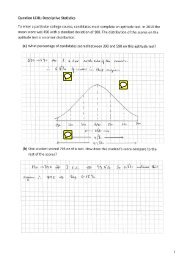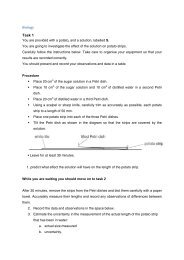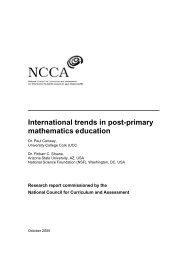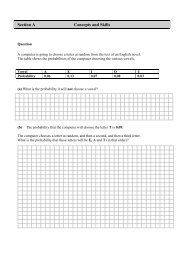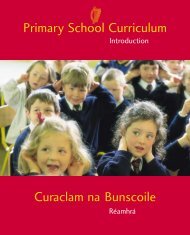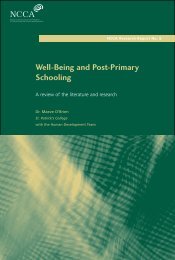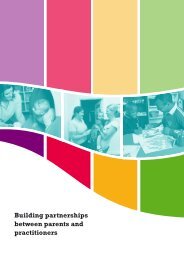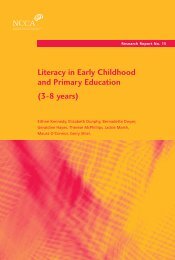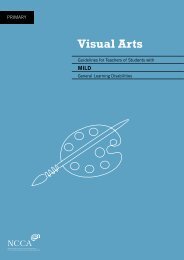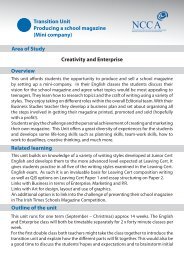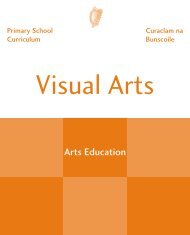Up and Away - National Council for Curriculum and Assessment
Up and Away - National Council for Curriculum and Assessment
Up and Away - National Council for Curriculum and Assessment
Create successful ePaper yourself
Turn your PDF publications into a flip-book with our unique Google optimized e-Paper software.
Section 5 Examples of classroom activities<br />
Strategy 3 – Developing scan reading skills<br />
Introduction<br />
Texts which contain a lot of factual in<strong>for</strong>mation are ideal <strong>for</strong> developing scan reading skills. Scan reading<br />
is a skill which allows us to locate in<strong>for</strong>mation in a text efficiently. When we scan read we ignore large<br />
chunks of text as we search <strong>for</strong> the desired in<strong>for</strong>mation. We don’t read <strong>for</strong> full comprehension.<br />
However, by extracting specific pieces of in<strong>for</strong>mation pupils gain a firm idea of what the text is about. In<br />
other words, scan reading allows pupils to underst<strong>and</strong> the main points of a text (i.e. achieve success)<br />
without knowing every word – a major confidence booster.<br />
Identifying key in<strong>for</strong>mation<br />
Level of text<br />
Third class.<br />
Level of learner<br />
A1 <strong>and</strong> higher.<br />
Time<br />
20-25 minutes.<br />
Approach<br />
1. Design a worksheet containing a grid/table which focuses on the generic main points of in<strong>for</strong>mation<br />
– i.e. people (who), event (what), place (where), <strong>and</strong> time (when). Make a class set of photocopies.<br />
2. Introduce the theme to generate interest <strong>and</strong> motivation. In this case ask the class what they know<br />
about telephones, <strong>and</strong> what they do with a phone (to call, to answer, to hang up, etc.).<br />
3. H<strong>and</strong> out the worksheets. Pupils look at the first paragraph of text <strong>and</strong>, in pairs, put in<strong>for</strong>mation in<br />
the relevant columns. They should use pencils to start with.<br />
4. Brief feedback. Pupils use their grids to answer questions such as, ‘Who is this about?’, ‘Why is he<br />
important?’, ‘When did it happen?’, ‘What do you know about him?’, etc.<br />
5. Repeat the process with the next paragraph.<br />
Source material: Try This 2. (Reprint, 2001). CJ Fallon.<br />
175



